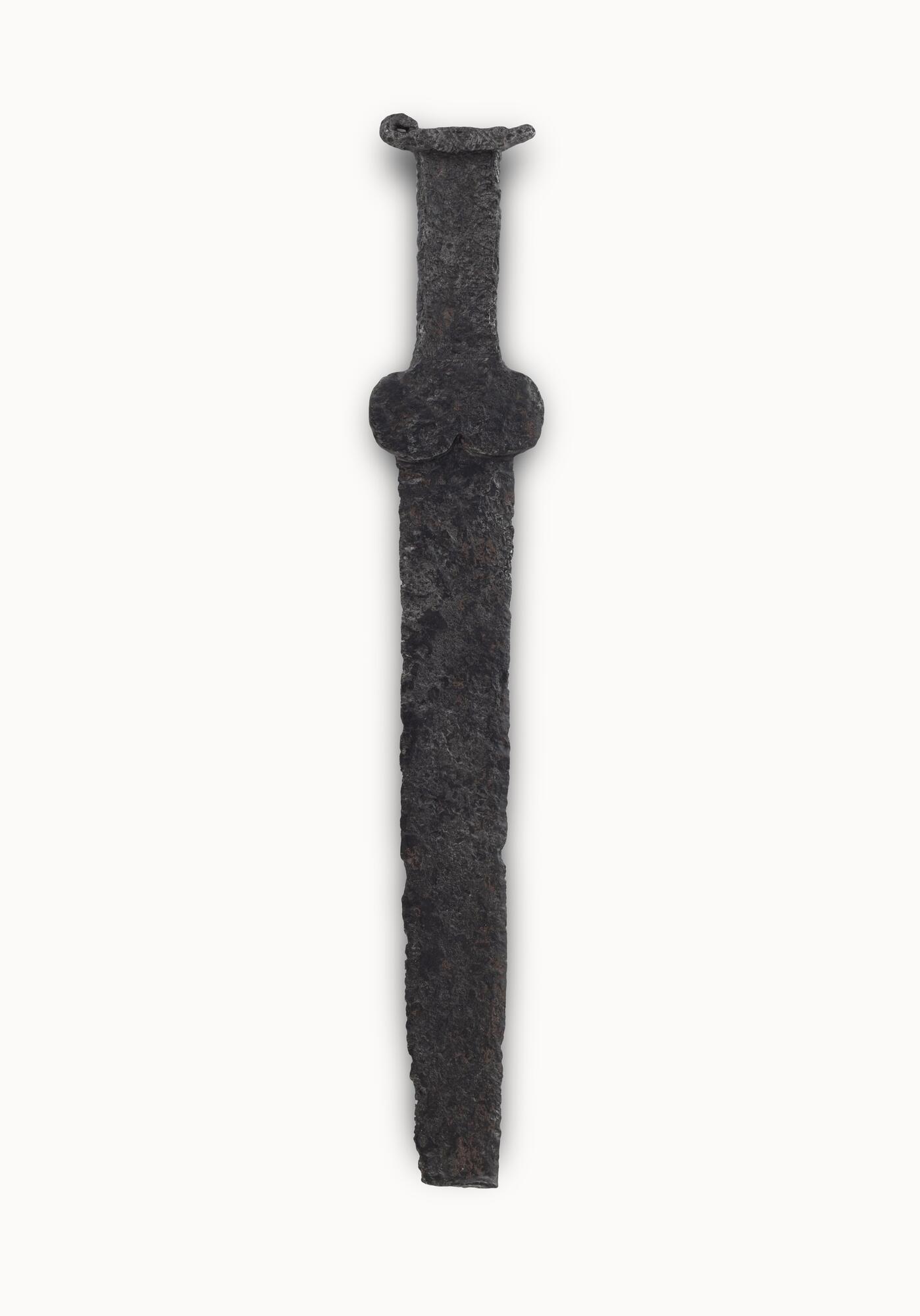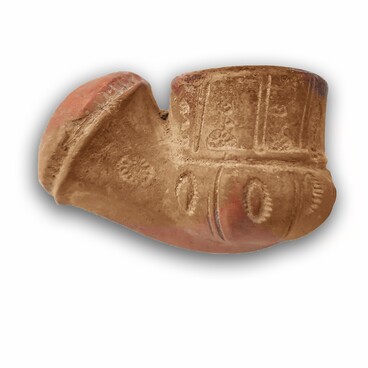The collections of the Kursk Regional Museum of Local History and the Kursk State Regional Museum of Archaeology contain swords and daggers dating from the Early Iron Age. One of them is a fully preserved akinak sword found in the vicinity of the village of Peny, Belovo district, Kursk region in 2017.
An akinak is a short iron sword used by the Scythians, the ancient nomadic people. Its blade and hilt are forged from a single piece of metal. It weighs 475 grams for a total length of 40.7 cm. The blade is triangular, hammered out to have two slants (it has a double-edged blade), with an elongated rhombus in cross-section. The edges are parallel, converging to a point in the last third of the length. The length of the blade is 27.5 cm, the width and thickness at the hilt is 4.6 cm and 0.5 cm respectively. However, the tip of the blade is chipped and the edge at the break is slightly bent.
The hilt is decorated on both sides with geometric chased ornamentation. On the one side of the hilt, the pattern consists of two lines of closed semicircles, between which a zigzag line runs along the axis of the hilt. The reverse side shows only two lines of closed semicircles, which run along both sides of the hilt. The zigzag in the center is almost indistinct.
Similar swords and daggers with a simple antennal pommel and a butterfly-shaped crossguard are also found in the Sarmatian territory. As a rule, the volutes of Sarmatian swords are symmetrical, running smoothly out of the base of the pommel.
In this case there is no symmetry in the arrangement of the volutes. A second notable detail is the presence of ledges on the pommel in those places where volute-like curls come out. The pommel is a bar decorated with geometric designs in the form of oblique and straight lines, some of which are connected to each other. Its unusual antennal pommel resembles a zoomorphic figure. One of the curls resembles an animal’s elongated snout and the other — its curved tail. All these features make the pommel resemble a reptile. The head is the basis for almost all known classification schemes of Scythian swords and daggers. Such swords are dated from the 6th to 5th centuries BC.
An akinak is a short iron sword used by the Scythians, the ancient nomadic people. Its blade and hilt are forged from a single piece of metal. It weighs 475 grams for a total length of 40.7 cm. The blade is triangular, hammered out to have two slants (it has a double-edged blade), with an elongated rhombus in cross-section. The edges are parallel, converging to a point in the last third of the length. The length of the blade is 27.5 cm, the width and thickness at the hilt is 4.6 cm and 0.5 cm respectively. However, the tip of the blade is chipped and the edge at the break is slightly bent.
The hilt is decorated on both sides with geometric chased ornamentation. On the one side of the hilt, the pattern consists of two lines of closed semicircles, between which a zigzag line runs along the axis of the hilt. The reverse side shows only two lines of closed semicircles, which run along both sides of the hilt. The zigzag in the center is almost indistinct.
Similar swords and daggers with a simple antennal pommel and a butterfly-shaped crossguard are also found in the Sarmatian territory. As a rule, the volutes of Sarmatian swords are symmetrical, running smoothly out of the base of the pommel.
In this case there is no symmetry in the arrangement of the volutes. A second notable detail is the presence of ledges on the pommel in those places where volute-like curls come out. The pommel is a bar decorated with geometric designs in the form of oblique and straight lines, some of which are connected to each other. Its unusual antennal pommel resembles a zoomorphic figure. One of the curls resembles an animal’s elongated snout and the other — its curved tail. All these features make the pommel resemble a reptile. The head is the basis for almost all known classification schemes of Scythian swords and daggers. Such swords are dated from the 6th to 5th centuries BC.



